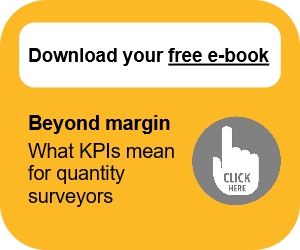Cost Value Reconciliations (CVR)
Cost Value Reconciliation (CVR) is a crucial financial management tool used to monitor and control project finances. It involves comparing the actual costs incurred on a construction project with the value of work completed to date. This comparison helps ensure that projects remain financially viable and highlights any discrepancies between costs and revenue.
Actual costs incurred might include direct costs (materials, labour, subcontractor fees, and any other expenses directly related to the construction work) and indirect costs (overheads, administrative expenses, and other costs not directly tied to specific project activities.)
The value of work completed (value earned) might include work certified (the value of work that has been completed, inspected, and approved by the client or project manager) and work not yet certified (the value of work that has been completed but not yet certified).
Cost vs. value compares the costs to date (the total actual costs incurred up to a specific date) and the value to date (the total value of work completed and certified up to that same date).
By comparing costs and value, CVR helps assess the profitability of a project. This analysis can inform decision-making and adjustments to project execution strategies. CVR helps track the financial health of a project by continuously comparing costs against the value of work done. This enables early detection of cost overruns and other financial issues. Understanding the timing of costs and revenue is critical for managing cash flow. CVR provides insights into when payments are due and when revenue will be received, aiding in effective cash flow planning.
CVR highlights financial risks early, allowing project managers to take corrective actions to mitigate potential financial losses. Regular CVR reports provide transparency and accountability, ensuring that stakeholders are informed about the project's financial status.
The process of CVR might include:
- Gathering detailed information on costs incurred, including invoices, receipts, payroll records, and other financial documents.
- Assessing the value of work completed, often through site inspections and progress reports. This might involve input from quantity surveyors and project managers.
- Comparing the actual costs against the value of work completed. Analysing any discrepancies and investigate the reasons behind them.
- Generating CVR reports that summarise the financial status of the project. These reports typically include key metrics such as cost to date, value to date, profit margins, and cash flow projections.
- Reviewing CVR reports with project stakeholders and take necessary actions to address any issues identified. This could involve adjusting project plans, renegotiating contracts, or implementing cost-saving measures.
[edit] Related articles on Designing Buildings
Featured articles and news
Amendment to the GB Energy Bill welcomed by ECA
Move prevents nationally-owned energy company from investing in solar panels produced by modern slavery.
Gregor Harvie argues that AI is state-sanctioned theft of IP.
Heat pumps, vehicle chargers and heating appliances must be sold with smart functionality.
Experimental AI housing target help for councils
Experimental AI could help councils meet housing targets by digitising records.
New-style degrees set for reformed ARB accreditation
Following the ARB Tomorrow's Architects competency outcomes for Architects.
BSRIA Occupant Wellbeing survey BOW
Occupant satisfaction and wellbeing tool inc. physical environment, indoor facilities, functionality and accessibility.
Preserving, waterproofing and decorating buildings.
Many resources for visitors aswell as new features for members.
Using technology to empower communities
The Community data platform; capturing the DNA of a place and fostering participation, for better design.
Heat pump and wind turbine sound calculations for PDRs
MCS publish updated sound calculation standards for permitted development installations.
Homes England creates largest housing-led site in the North
Successful, 34 hectare land acquisition with the residential allocation now completed.
Scottish apprenticeship training proposals
General support although better accountability and transparency is sought.
The history of building regulations
A story of belated action in response to crisis.
Moisture, fire safety and emerging trends in living walls
How wet is your wall?
Current policy explained and newly published consultation by the UK and Welsh Governments.
British architecture 1919–39. Book review.
Conservation of listed prefabs in Moseley.
Energy industry calls for urgent reform.

























